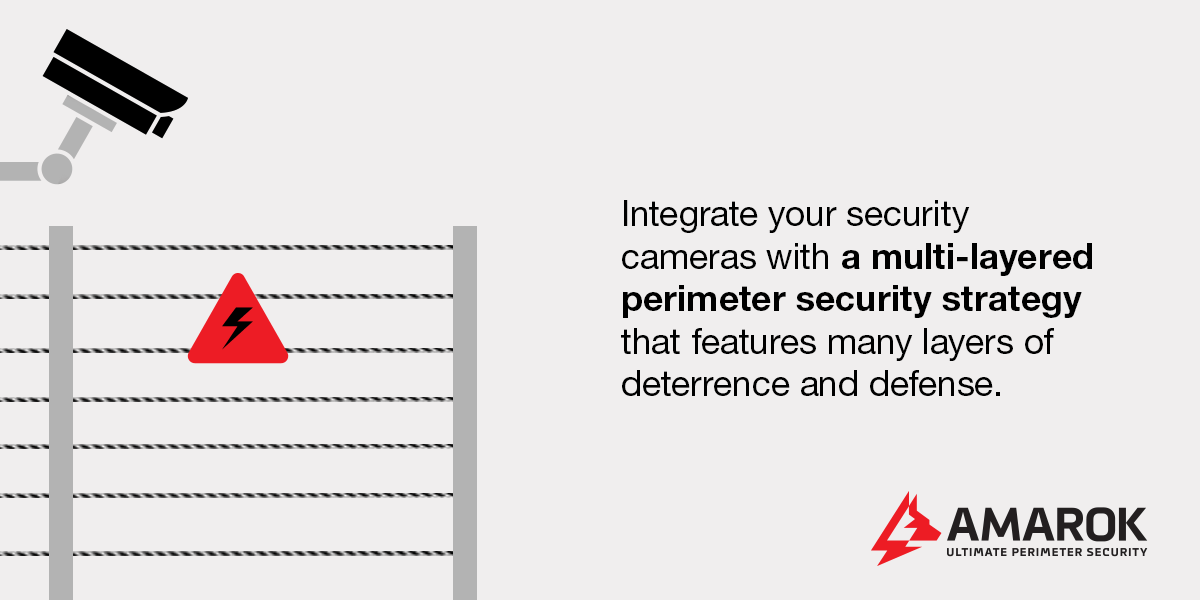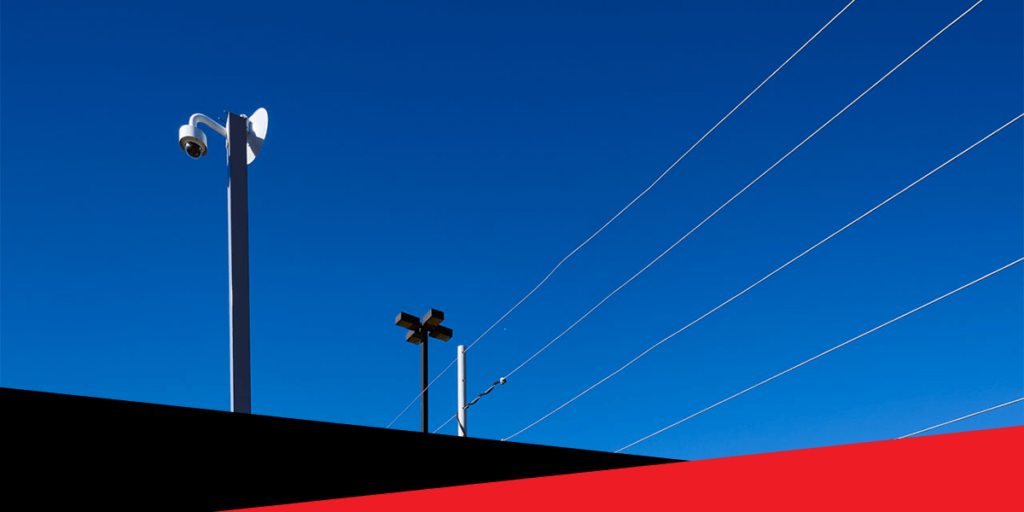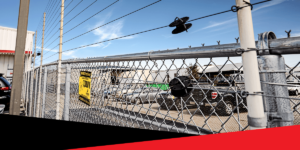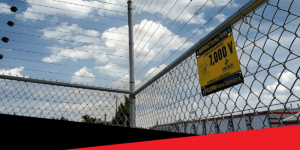Security cameras are popular among many businesses, with the video surveillance market projected to reach over $62 billion by 2027. CCTV cameras help protect your property by providing real-time visibility and evidentiary support in case of incidents.
However, relying on cameras as a stand-alone solution for your site’s security can leave dangerous gaps in your defenses. An effective perimeter security plan must incorporate multiple layers of protection for optimal risk mitigation.
In this article, we’ll explore the main problems with security cameras and why an integrated, multi-faceted approach is essential for safeguarding your facility and property.
Common Problems With Security Cameras
Security cameras have several drawbacks that can compromise their effectiveness. All of these issues — which can happen at any time and without warning — put your site at risk of external theft. Here are some of the most common security camera vulnerabilities:
CCTV Security Cameras Not Working
The biggest problem with security cameras is that they can malfunction. The most common reason why your security cameras are not working is software or firmware issues, causing cameras to freeze, reset, or fail to record. These glitches can include:
- Software bugs
- Corrupted firmware
- Incompatible software
- Failed firmware updates
In addition, physical damage to cameras due to weather, vandalism, or wear and tear can render them inoperable. Failure of critical components like sensors, lenses, or infrared LEDs can severely degrade performance.
Power disruptions are another major cause of security cameras not working. Localized outages, faulty wiring, or insufficient voltage can all stop cameras in their tracks. Even if you install wireless, battery-powered cameras, the batteries become depleted over time and may stop working altogether without advanced notice.
All of these camera malfunctions can result in extended downtime, compromising your site’s security.
Blind Spots and Coverage Gaps
Blind spots are caused by improper camera placements, obstructions blocking the field of view, incorrect settings, or areas that are difficult to access. Blind spots allow intruders to slip by undetected if other security measures are lacking.
Even with a strong camera placement strategy or a substantial number of cameras, there may still be gaps that opportunistic thieves could exploit. Attempting to cover every square inch of a property with cameras is often cost-prohibitive and may still leave blind spots, especially if your site is large or oddly shaped.
Image Quality Issues
Poor image quality is another security camera vulnerability that can compromise your site’s security. If camera footage is too low-quality to identify details, it loses much of its value and becomes unusable as evidence. Flawed image quality can result from the following:
- Insufficient resolution
- Bad lighting
- Dirt or debris on lenses
- Improper focus
Cameras may also struggle to capture usable images in low-light conditions without additional illumination. Glare from direct sunlight or reflections can wash out details. Additionally, inclement weather like heavy rain or fog can obscure visibility.
Lack of Immediate Response
The most significant drawback of relying solely on cameras is their inability to actively intervene and prevent crimes in progress. They are reactive tools, capturing footage for later review but offering little help in the moment.
Unless someone is monitoring the camera feeds live 24/7, there will always be a delay between when an incident occurs, when it is noticed, and when it is responded to. During that gap in time, criminals can slip in, commit their acts, and escape. After the fact, footage may assist in investigations but can’t undo the damage done.
Limited Deterrence
While visible cameras can make some opportunistic criminals think twice, they are far from a foolproof solution. Determined intruders often scout out sites in advance, identifying blind spots and other vulnerabilities. Some may take steps to obscure their identity, such as wearing masks or tampering with cameras. In other cases, the potential reward may outweigh the risk of getting caught on video.
Hacking Concerns
Security cameras can be vulnerable to both physical and digital attacks. Cameras can be intentionally damaged, deconstructed, stolen, or destroyed by criminals attempting to evade detection. Cameras and surveillance networks have also become prime hacking targets. Once inside the system, they can view sensitive footage, manipulate cameras, or install false video feeds.
Additionally, over-reliance on cameras can lull businesses into a false sense of confidence, causing them to neglect other critical aspects of physical security. While cameras are undoubtedly valuable, no amount of passive video surveillance can replace a proactive and integrated security approach.

Go Beyond Cameras With a Multi-Layered Security Approach
To overcome these challenges, integrate your security cameras with a multi-layered perimeter security strategy that features many layers of deterrence and defense. These additional security measures include:
- Electric fencing: Electric fences create a formidable barrier around your property. The electric fencing is installed inside your existing fence, stopping criminals from breaching the perimeter. If a would-be intruder comes into contact with the fence, it delivers a safe but memorable shock to prevent further entry attempts.
- Access control systems: Prevent unauthorized entry by verifying the credentials of those trying to access your facility. With features like fob readers, keypads, and intercoms, Gate Access Control at your site’s entry and exit points prevents criminals from gaining access to your premises. Combining access control with your security cameras connects surveillance footage to entry logs for verification and investigation if necessary.
- Alarm-based lighting: Integrating cameras with perimeter alarm-based lighting provides further deterrents against crime. If a would-be intruder tries to breach your electric fencing, the area is immediately flooded with light, ensuring your cameras can capture high-quality footage of the incident. Additionally, the loud sirens encourage intruders to flee and alert your team to initiate a fast response.
- Building intrusion detection: Building intrusion detection systems provide instant alerts if an unauthorized person tries to access offices, warehouses, or other buildings. The motion or door sensors at entry points trigger an alarm if there is an attempt to gain access during or after business hours. When integrated with security cameras, you can verify the alarm and determine the appropriate response.
- Remote and mobile monitoring: With remote video monitoring software, you can view live and recorded video of your property from anywhere at any time. The software allows you to actively watch over your facilities, configure smart adapters, and promptly pull up camera feeds on any device if an alarm is triggered.
Strengthen Your Security With Unified Solutions from AMAROK
While security cameras have their place, using them alone can lead to dangerous vulnerabilities. A multi-layered security approach starting with The Electric Guard Dog™ Fence is the best way to protect your facility against threats like external theft.
AMAROK is an industry-leading perimeter security solutions provider, securing over 8,000 sites. During our free threat assessment, our experts will work with you to tailor our solutions based on your unique needs.
Contact us today to get comprehensive perimeter security for your business or facility.





